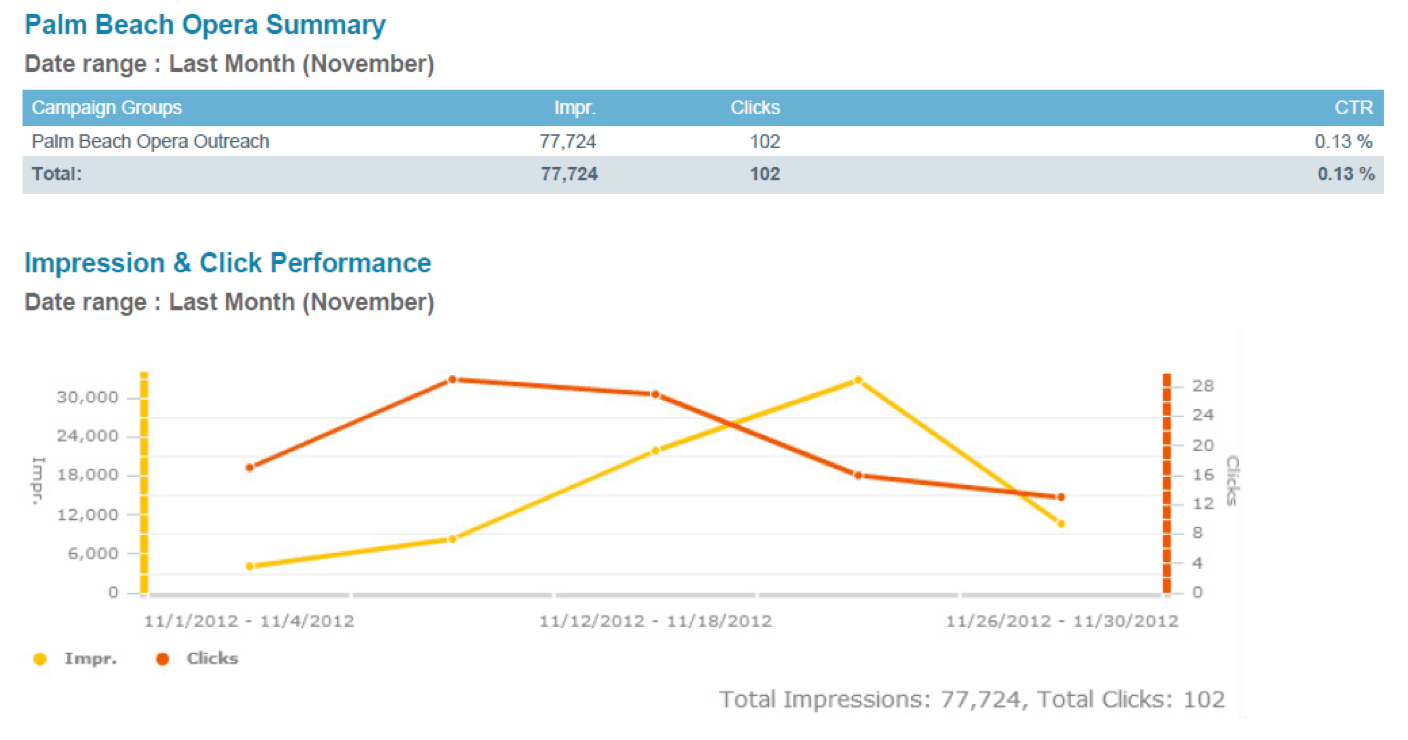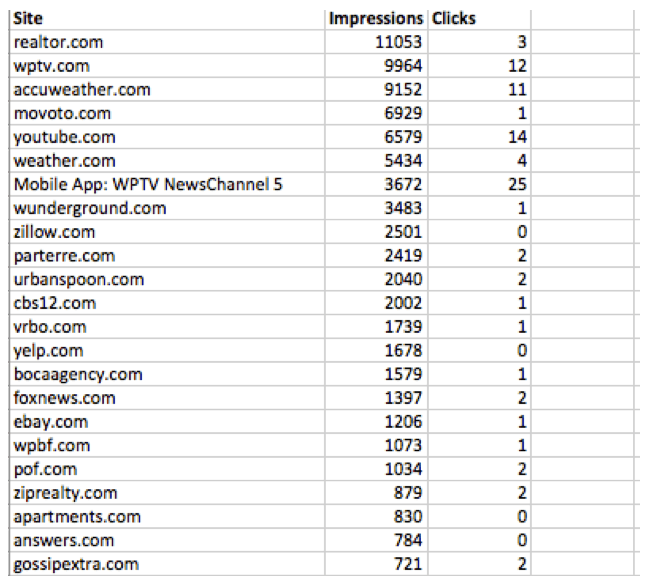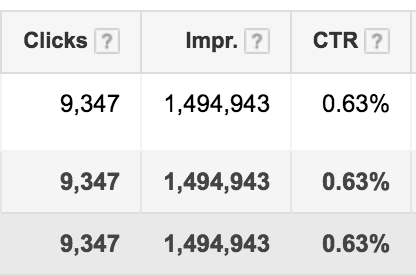So, when you want to run some online display ads, are you placing them through your local newspaper, TV news station, or magazine?
STOP.
Placing ads direct on sites like these is the equivalent of ye olde “spray and pray” approach which is rarely successful with limited arts organization budgets. You end up spending a lot of money for little to no results.
Success in online display advertising is all about targeting. You want to serve ad content to people who have a good chance of purchasing tickets. These are people who may already like the opera/ballet/symphony/museum, or who like similar cultural events. These are also people who you feel are good prospects for whatever event you are promoting even if they don’t directly like your particular art form.
You can do this by placing ads through the Google Display Network (GDN). GDN uses the power of behavior and interest targeting to show your ads to people not just on websites you think they might visit, but on the actual websites they go to no matter where they are on the internet.
Let’s take a look at a little case study from Palm Beach Opera.*
Like most of you, we placed our online ads direct each year with our local newspaper and TV new stations. The number of impressions and clicks for each show was lackluster at best every single time. Here is a screenshot of some of that data:

For this particular opera campaign, we got a total of just 77,724 impressions and 102 clicks. We were spending $2,500 – $3,000 PER OPERA, PER WEBSITE for this kind of result.
I knew there had to be a better way.
We switched everything over to the Google Display Network (with the help of the fine folks over at Capacity Interactive) and stopped placing direct on local websites. In our very first outing (for the opera Macbeth), we dramatically increased our impressions and clicks.

WHAAAAAAAAAAA!? We ended up with just under 900,000 (yes, that is the right amount of zeros) and 1,800 clicks. All for under $3,000, saving us thousands of dollars. Not to mention the fact that we installed Google’s tracking pixel on our website so that we could track conversions…
One of the biggest concerns we had was that our ads weren’t going to show up on any local websites. That turned out not to be the case. Here is a sample of where our ads were shown:

You can clearly see the national sites there but our local sites (WPTV, CBS12, WPBF, Gossip Extra) are still included.
You may be looking at this and thinking that this is all well and good, but your organization doesn’t have $3,000 per show to put towards advertising like this.
Let’s look at another, smaller organization that was working with a much smaller budget.
Earlier this year, I worked with the Palm Beach Chamber Music Festival to promote their summer season. We had a small budget of just $800 for online advertising. Their result with that budget was this:

They ended up with just under 1.5 MILLION impressions and over 9,000 clicks which is incredibly significant for an organization of their size (or any size, really).
So, now that I’ve got you totally convinced to switch over your online advertising to GDN, here are some tips:
- If you or a member of your team would like to try out running these ads in-house, Google offers some great tutorials on how to get things set up. If you are not sure you want to attempt this on your own, reach out to a professional like Capacity Interactive or similar.
- Always be sure to run multiple ad sizes and not just the standard 300 x 250 and 728 x 90. Google gives some good guidance on which sizes tend to work the best.
- Utilize remarketing campaigns in conjunction to your new acquisition campaigns. This will show your ads again to people who clicked through on a previous ad. If you are tracking conversions, this is most likely where you’ll see the highest ROI. (Google also has some instructions on how to set that up.)
- Make sure that the landing page you are directing people to upon click through is optimized so that they can find out more about the event and then purchase a ticket quickly and easily. My colleague Marc van Bree wrote a great post on how to do this here on Arts Hacker.
One more piece of advice. If you have been placing online ads with your local newspaper ad rep, they may not react favorably when you tell them that you are not going to be doing that anymore. They will most likely try to get you to place in their “ad network” or even on the Google Display Network through them. I can’t tell you what decision to make but, keep in mind that it is their job to sell you things and bring in revenue for the paper and not to help you create campaigns that bring in revenue for your organization.
NOTE: Google will not let you run your Google Grants and paid GDN campaigns from the same account. If you are using Google Grants (which you absolutely should be), you will need to make a separate account to run your display advertising.
[box]*Full disclosure mode: I was the Director of Communications at Palm Beach Opera until December 2015.[/box]